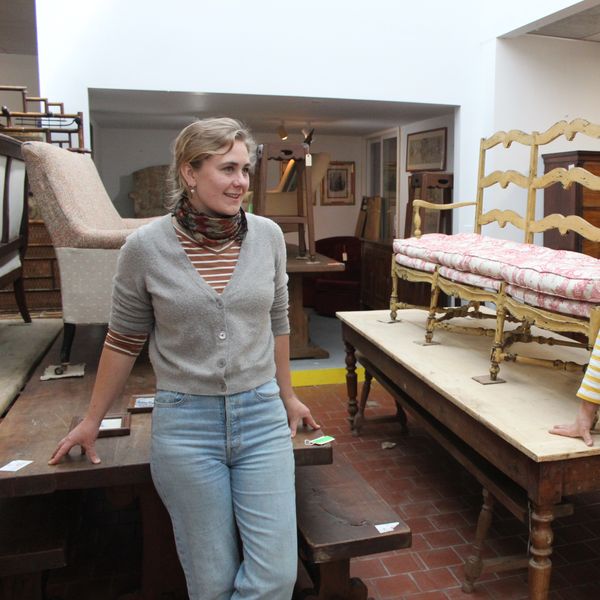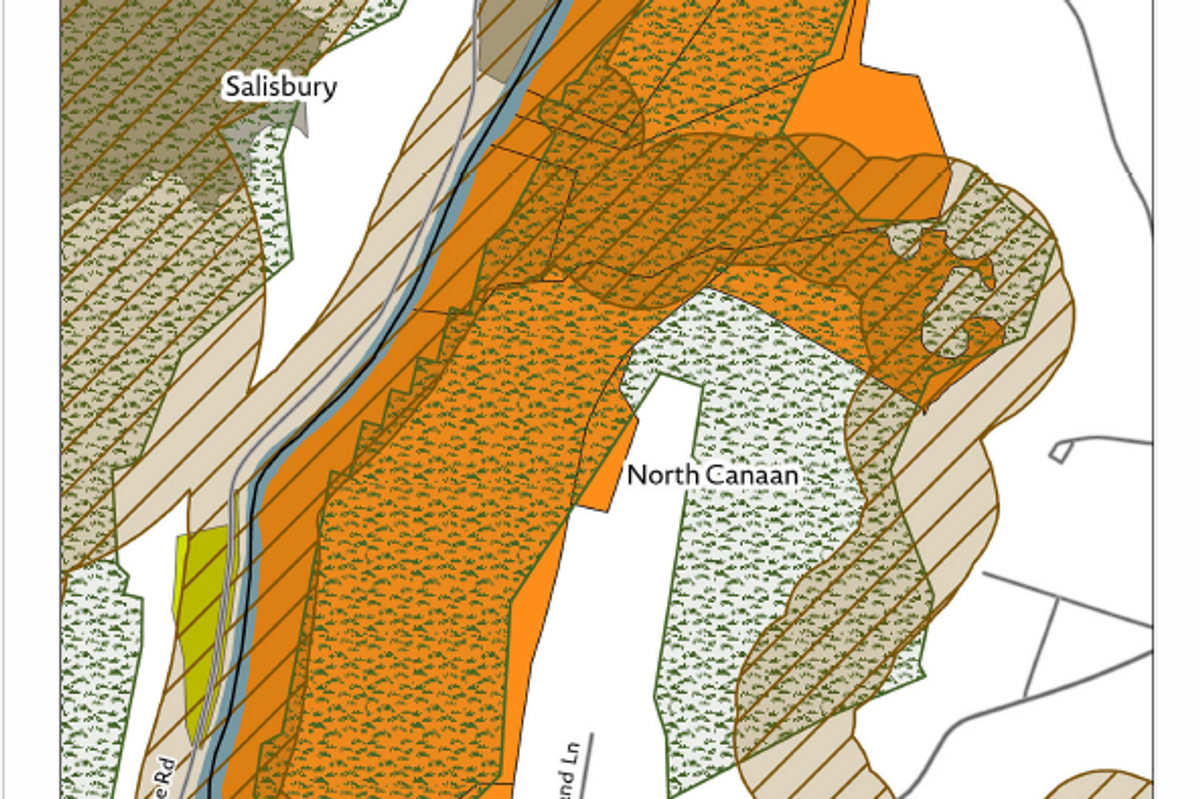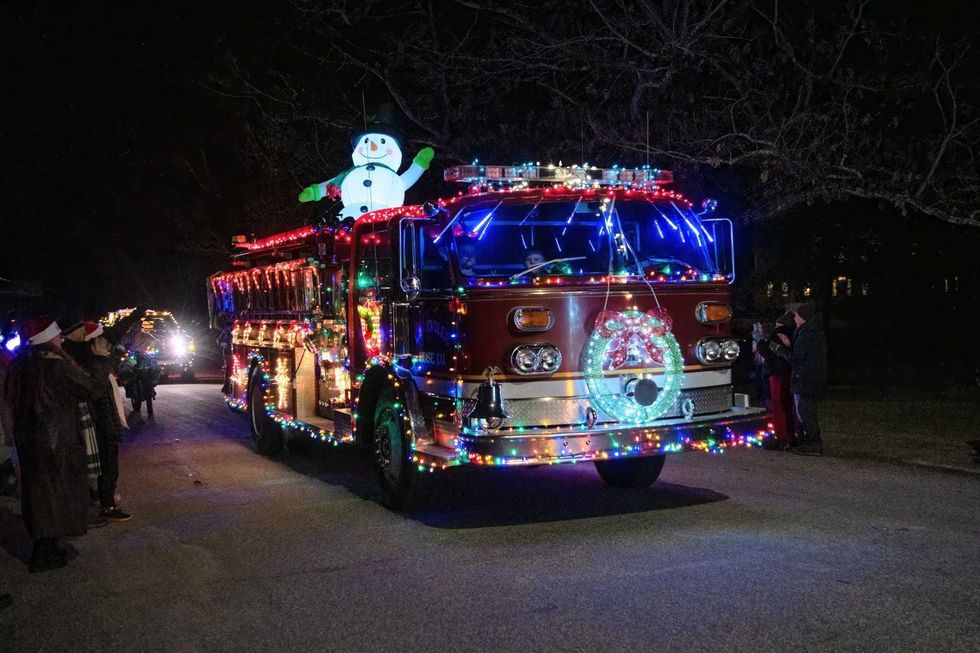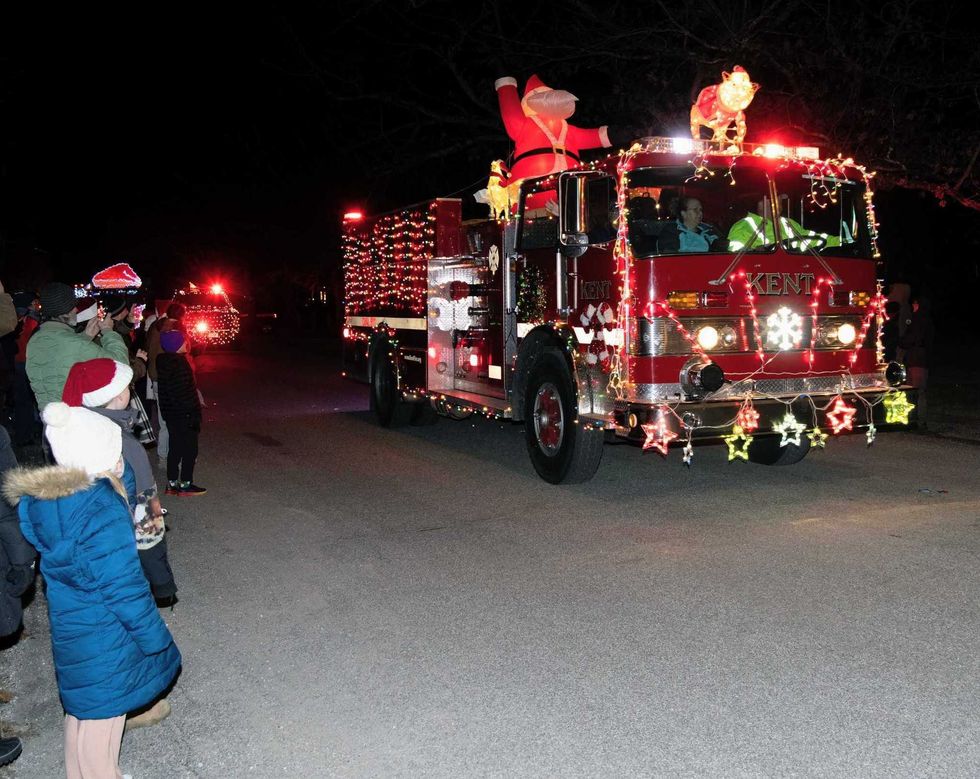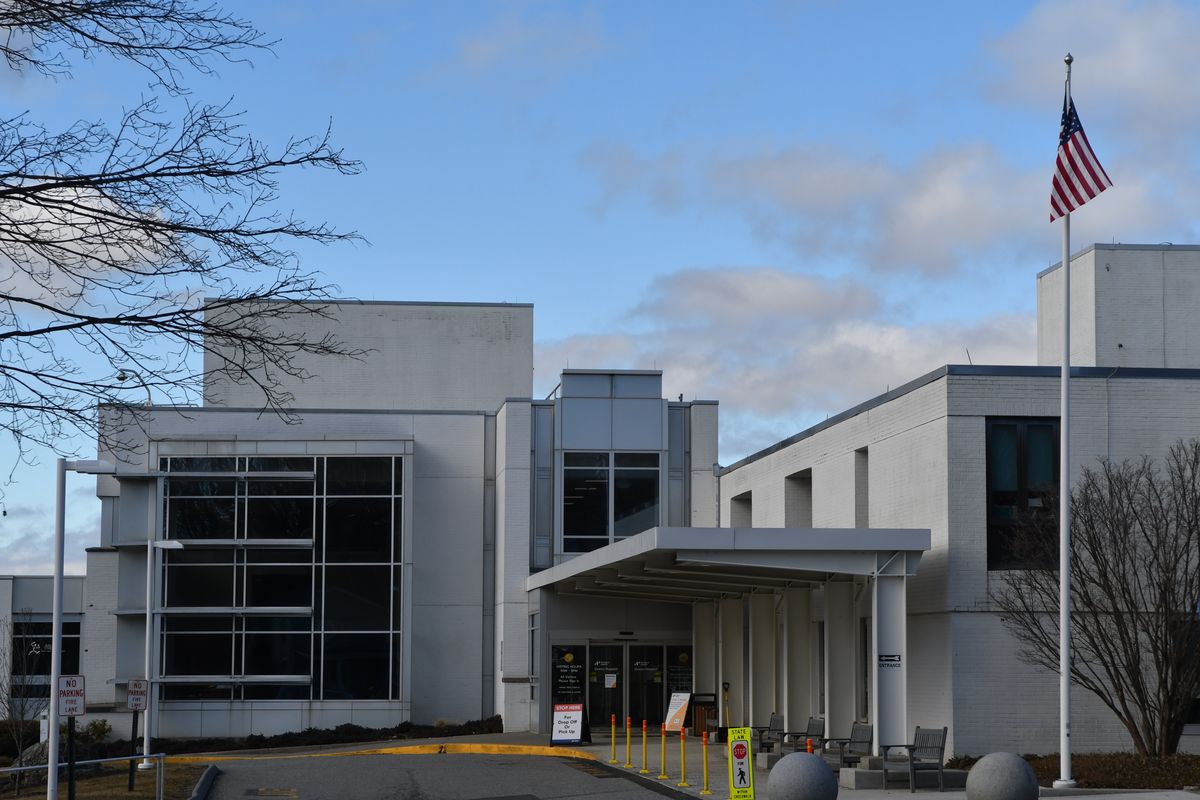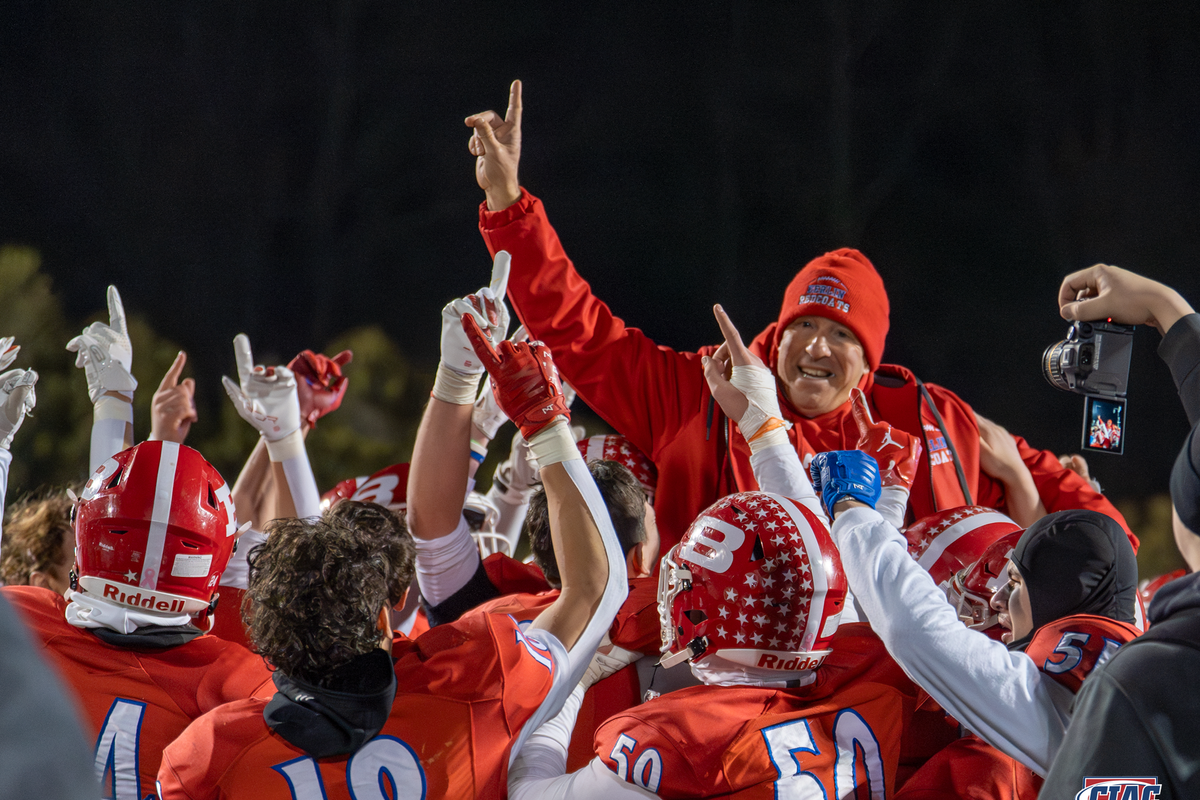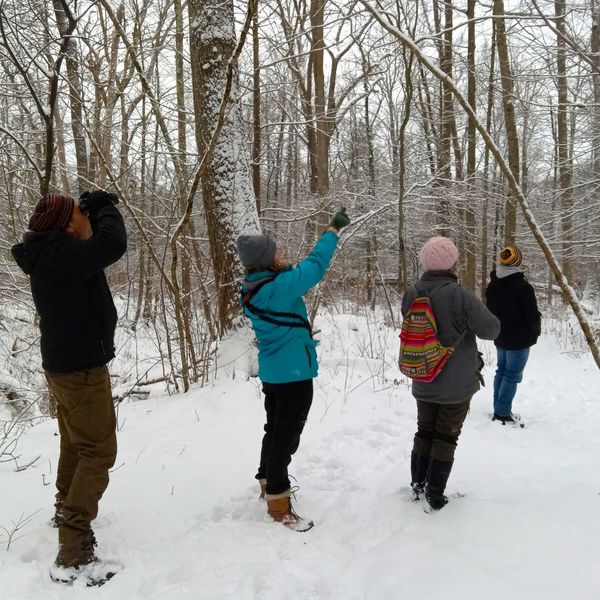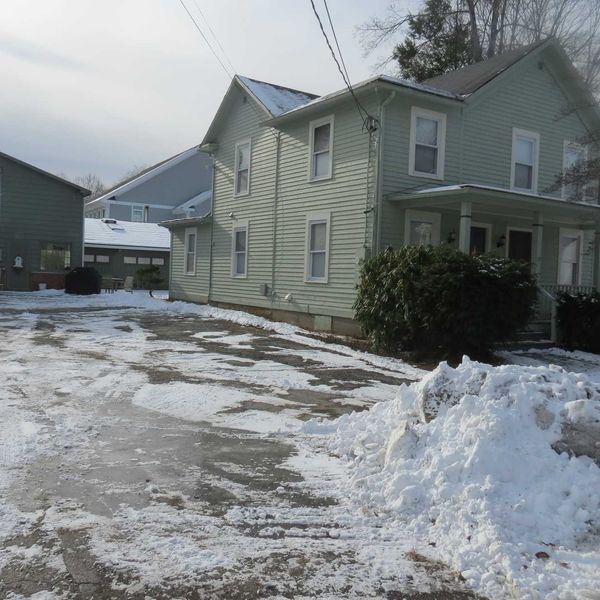Latest News
McEver nixes subdivision plan; riverfront property now slated to be conserved for public use
Dec 22, 2025
Courtesy of the Northwest Connecticut Land Conservancy
NORTH CANAAN — The plan for a 20-lot subdivision off Honey Hill Road has been dropped and instead, the land, owned by H. Bruce McEver, could become a large public nature preserve.
The announcement came at the Dec. 15 meeting of the Board of Selectmen, when Catherine Rawson, executive director of the Northwest Connecticut Land Conservancy, went before the board to request a required letter of approval allowing the conservancy to seek state grants for the purchase. She emphasized that significant work remains, including extensive surveys, before a deal is completed and the deed is transferred.
Should all proceed as planned, a transfer of this nature generally takes 24 to 36 months to close, she said. Once finalized, the land must be opened to the public within six months. Funding decisions from the state— particularly through the OpenSpace and Watershed Land Acquisition program administered by the Department of Energy and Environmental Protection — are expected inmid-2026. Additional funding will also be sought through the federal Highlands Conservation Act, as well as from private donations.
Rawson said the conservancy, which is based in Kent, had been in discussion with McEver and is delighted to partner with him to leave what she described as an extraordinary legacy. She expressed gratitude to him for making this decision.
“I’m a conservationist at heart,” McEver said, talking about his love of the environment since childhood. He said his initial motivation for seeking to develop the property was to help address the housing shortage in North Canaan, but construction costs were far lower when the idea first arose.
In today’s market, he said, selling the lots would be difficult, making the shift away from development largely an economic decision. McEver spoke of how beautiful the property is, with its hundreds of trees, and how he’s worked to remove invasives there. He said he is pleased to be working with the land trust on the project.
The land sits off Honey Hill Road, and the conservancy plans to purchase approximately 245 acres, which borders over a mile of the Housatonic River and a portion of the Blackberry River.
The property offers an extensive core forest, high biodiversity and intact wildlife habitat, which Rawson said “ranks it among the most ecologically valuable and climate-resilient landscape in the region. I’m delighted. It’s one of the most important conservation pieces in Northwest Connecticut in the organization’s history. We’re so pleased to partner with Bruce for the benefit of the community for generations to come."
The conservancy envisions creating miles of hiking trails on the land, some of which could be handicap accessible. Public access to the river has yet to be determined. Rawson said as part of the broader vision, the conservancy is exploring the possibility of installing a pedestrian footbridge over the river, which would result in the potential linking of lands on both sides, “strengthening regional trail networks and enhancing connectivity between the communities of North Canaan and Salisbury.”
Tim Abbott, executive director of the Housatonic Valley Association, said the cost to acquire the property is $2.25 million.
Abbott has been deeply involved in the project. At the time the subdivision application was first heard in October 2023, he was chairman of the Planning and Zoning Commission and conservation director of HVA. He was vocal about his opposition to the plan and HVA became an intervenor in the proceedings.
Always recusing himself during discussions of the subdivision, in November 2024, he resigned from the commission following pressure from proponents of the plan who were also advocating for a text amendment to the regulations regarding road lengths on dead-end streets and number of lots allowed on such streets.
When the commission did not act on the text amendment request, the applicant withdrew the application and submitted a new one containing 33 lots but later withdrew it and went back to the original 20 lots after the amendment was approved.
Abbott echoed Rawson’s words of delight with the outcome. “All along, HVA wanted a real conservation project,” he said, adding a network of conservation organizations really “kept their eye on the ball. We’re very happy; it’s a huge win for everyone.”
Abbott noted the four conditions imposed on the application’s approval never progressed. These included a deed restriction protecting a 300-foot buffer extending inward from the edge of the river, a revegetation and erosion-control plan along 20 feet of the river, an endangered species survey and an archeological survey.
“The conservation of the McEver lands in North Canaan represents a rare opportunity to safeguard a landscape of exceptional importance while creating a lasting public benefit—protecting land, water, wildlife habitat and recreational access for generations to come,” Rawson said.
Founded in 1965, the Northwest Connecticut Land Conservancy is the state’s largest land trust, protecting 14,200 acres in Litchfield and northern Fairfield counties.
Keep ReadingShow less
Cornwall's Parade of Lights, Sunday, Dec. 21.
Photo by Tom Browns
CORNWALL — A variety of brightly decorated vehicles rolled through Cornwall Village the night of Sunday, Dec. 21, for the town's inaugural Parade of Lights. It was well attended despite the cold conditions, which didn't seem to dampen spirits. The various vehicles included trucks, utility vehicles, a school bus and rescue apparatus from Cornwall and surrounding towns.
Keep ReadingShow less
Sharon Hospital
Stock photo
SHARON — Northern Dutchess Paramedics will cease operating in Northwest Connecticut at the start of the new year, a move that emergency responders and first selectmen say would replace decades of advanced ambulance coverage with a more limited service arrangement.
Emergency officials say the change would shift the region from a staffed, on-call advanced life support service to a plan centered on a single paramedic covering multiple rural towns, raising concerns about delayed response times and gaps in care during simultaneous emergencies.
The decision became known on Dec. 11, when communities were informed that NDP’s service would end as of Jan. 1, according to Andrea Downs, president of the Falls Village Volunteer Fire Department and an employee of NDP.
Founded in 1994 and based in Rhinebeck, New York, NDP has provided advanced and basic life support ambulance services to communities in Dutchess and Columbia counties in New York, as well as parts of Litchfield County, for nearly three decades.
How the change came about was outlined by Al Tortorella of Sharon, also an employee of NDP.
Tortorella said every Connecticut municipality is required to have an advanced life support provider. For the past 28 years, Sharon Hospital has fulfilled that requirement by signing an annual hospital-sponsored agreement with NDP. In recent years, the agreement was signed by Dr. Ronald Santos, head of the hospital’s emergency department, under whose medical license NDP operates.
When NDP recently approached Santos to renew the agreement, he said he could not sign it, a decision that took the organization by surprise, Tortorella said.
Area towns operate volunteer ambulance squads that provide basic life support. NDP supplements those crews by delivering advanced medical care, administering medications and conducting inter-facility transports.
Sharon Hospital, which is part of Nuvance Health, merged earlier this year with Northwell Health. Downs and Tortorella said they understand that the hospital system plans to replace NDP with its own paramedic service.
Under the proposed arrangement, a single paramedic would cover the Sharon Hospital catchment area, starting each 12-hour shift in New Milford before traveling to Sharon. If needed, the paramedic would be assisted by a paid EMT provided by Nuvance.
Tortorella sharply criticized the model.
“It’s a system designed to fail,” Tortorella said. “This is a huge issue.”
Downs echoed those concerns, noting that the paramedic’s 12-hour shift would include significant travel time between locations.
“I’m very concerned about the health and well-being of residents in the Northwest Corner,” she said. “We don’t want any reduction in services for patients in the region. I can’t understand the rationale of taking services away. Northwell wants to maintain a model of corporate health care, but they can’t put a face to the people and culture we’ve established here. We’re talking life and death.”
Downs emphasized that the decision does not involve layoffs at NDP, which was recently acquired by Empress. She said there is ample demand for paramedic services in New York state and that employees’ jobs are secure. The concern, she said, is for the safety of families, friends and neighbors in Northwest Connecticut.
In an interview, Sharon Hospital President and CEO Christina McCulloch and Andrea Rynn, assistant vice president for community, government and public relations at Northwell Health, addressed the decision to discontinue the hospital-sponsored agreement with NDP.
“Recently, concerns were brought to our attention about compliance and [a lack of] communications,” they said. “This information left us unsettled and unable to be a sponsoring hospital at this time.”
They acknowledged that the timing of the transition was far from ideal. “Despite the tight timing, we are actively developing a coverage plan in concert with local first responders and area leaders. This is a process that is just beginning and we are confident it will strengthen over time.”
McCulloch and Rynn said the hospital and health system remain committed to maintaining service continuity and working with community partners to enhance emergency medical services across the region.
The pair have met with representatives of area ambulance squads and on Friday held a session with the region’s first selectmen.
Gordon Ridgway, first selectman of Cornwall, said people are feeling rushed by the move. They are concerned that services will be lessened, not enhanced.
“This is the most important thing in town; picking up people in the middle of the night and providing immediate care. It has to be done well.”
Falls Village First Selectman David Barger said the meeting was productive and answered some questions, but left others unresolved.
He said he plans to host a meeting in January at the town’s emergency services center, inviting ambulance providers, first selectmen and hospital representatives to continue the discussion.
Keep ReadingShow less
Connecticut crowns football state champs
Dec 19, 2025
Berlin High School’s football team rejoices after a last-minute win in the Class M championship game Saturday, Dec. 13.
Photo courtesy of CIAC / Jada Mirabelle
In December’s deep freeze, football players showed their grit in state playoff tournaments.
Connecticut Interscholastic Athletic Conference named six state champions in football. The divisions are based on school size: Class LL included schools with enrollment greater than 786; Class L was 613 to 785; Class MM was 508 to 612; Class M was 405 to 507; Class SS was 337 to 404; and Class S was fewer than 336.
Eight teams qualified for each tournament and all championship games were played on Saturday, Dec. 13.
Class LL was won by Greenwich High School for the second straight year. Greenwich beat Southington High School 45-6 to win the tournament. Jack Kelly rushed in three touchdowns for the Cardinals and caught a fourth.
Class L was won by New Canaan High School, which completed an undefeated season. New Canaan beat Cheshire High School 34-13 for the school’s fourth-straight state title. In the regular season, New Canaan defeated Greenwich 14-7.
Class MM was won by Windsor High School, which defeated Bunnell High School 23-13. Windsor quarterback A.J. Robinson threw for 140 yards with a passing touchdown and two rushing touchdowns.
Class M was won in the final minute by Berlin High School 20-15 over Brookfield High School. The thriller came down to the wire. Brookfield went ahead with a late touchdown. Then on the kickoff that followed, Berlin’s Eli Rice ran it 80-yards to the house to take the lead with 33 seconds remaining and secure the state trophy.
Class SS was won by Daniel Hand High School, marking its 15th state title in school history. Hand defeated reigning champion Killingly High School 37-13. Killingly was previously on a 25-game win streak that stretched over two seasons.
Class S was won by Sheehan High School, defeating Northwest Catholic High School 21-7. Running back Joshua Durant ran for 215 yards and three touchdowns in the win for Sheehan, which was the first state title since 2019 for the school.
Details and photos from each championship game can be found at ciac.fpsports.org
Keep ReadingShow less
loading

